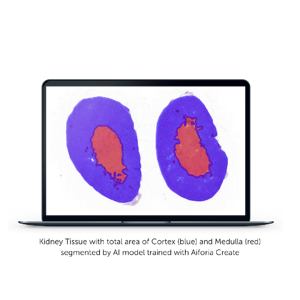Interview with Veterinary Pathologist, Professor Garry Adams, on developing AI models with Aiforia Create
 Professor Garry Adams, DVM, PhD, Diplomate, American College of Veterinary Pathologists, is a Senior Professor at the Department of Veterinary Pathobiology, Texas A&M University. He is also an Aiforia Create user, developing AI models to review tissues. In this interview he discusses using AI to review tissues for histopathological lesions in blinded studies.
Professor Garry Adams, DVM, PhD, Diplomate, American College of Veterinary Pathologists, is a Senior Professor at the Department of Veterinary Pathobiology, Texas A&M University. He is also an Aiforia Create user, developing AI models to review tissues. In this interview he discusses using AI to review tissues for histopathological lesions in blinded studies.
What is the focus of your work?
I have always been intrigued by the biological interface between hosts and microbial agents, and the resulting patterns of morphological lesions, clinical signs, gene expression profiles and cell biology. The morphologic, cytokine/chemokine, transcriptomic, proteomic and metabolomic patterns of host and pathogen responses provoke a series of fundamental questions:
e.g. What is the molecular pathogenesis of these lesions?; Does the host genome manipulate the pathogen or vice versa?; What host and pathogen cellular pathways are perturbed and dysfunctional in the disease processes?; What is the cause of death?; Can we apply genomic pathology (the convergence of ‘omics’ and artificial intelligence and deep learning of histopathology with systems biology) to more fully understand infection biology?
My research is focused on the: 1) investigation of the comparative molecular pathogenesis of zoonotic intracellular bacterial pathogens in natural target animal models, particularly brucellosis, salmonellosis, mycobacterial diseases, and Lyme Disease; 2) development of vaccines and host gene expression-based diagnostics for zoonotic and select agent caused diseases, and especially 3) development of in silico host:pathogen interactome predictive models based upon bi-directional in vivo host (bovine/murine) and Brucella spp., Mycobacterium spp. and Salmonella enterica Typhimurium interactions.

What are you using Aiforia Create for?
As a trained and experienced anatomic pathologist, my role is to review tissues for histopathological lesions in blinded studies and apply artificial intelligence and deep learning of digitally scanned histologic tissue sections using established software platforms, e.g. Aiforia, to evaluate and quantitate induced lesions.
How did you find getting started with the software?
Making the transition from glass slides to digital images at first seemed to be somewhat challenging, but with excellent virtual direct person-to-person training, I have become very comfortable with the Aiforia platform, and now using Create, I am co-writing my first AI Model with Dr. Lindsey Smith which we will probably release before the Christmas holidays for application to ongoing research projects.
What is the biggest benefit of Aiforia Create to your work?
In my area of collaborative research with several scientists across the USA, I am enthusiastic about using the Aiforia platform to provide higher quality unbiased quantitative histopathological data for testing hypotheses.
How is AI impacting the field of pathology?
In my opinion, artificial intelligence and deep learning will increasingly assist veterinary pathologists to become more efficient and effective in delivering improved scientific data.
Find out more about Aiforia Create: https://www.aiforia.com/aiforia-create
































